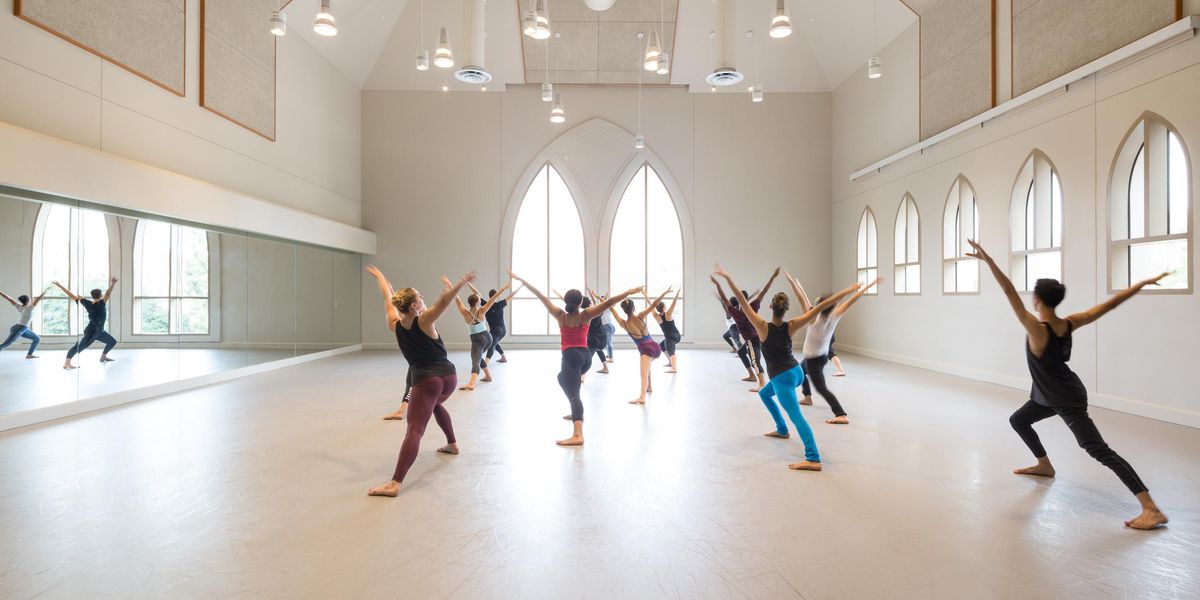The Joffrey Ballet
The Joffrey Ballet
Ted Shawn Theatre
Jacob’s Pillow, Becket, MA
August 22–26, 2012
Performance reviewed: August 24
For the Joffrey’s first visit to the Pillow in 47 years, artistic director Ashley Wheater chose a rich mix of three recent works that were made for the company.
Stanton Welch’s world premiere, Son of Chamber Symphony, begins with Yumelia Garcia in a flat, white tutu, twirling slowly in the center like a music-box figurine. Four men costumed right out of Scheherazade (designs by Travis Halsey), stand like statues in the four corners. As Garcia exits, each of the four men—Derrick Agnoletti, Aaron Rogers, John Mark Giragosian, and Ricardo Santos—performs a virtuosic solo, each more daring than the last. (The men, in general, are at an impressive level technically.)
Three successive duets go beyond that first hit of the contrast between doll-like woman vs. brawny guys. The duet for Victoria Jaiani and Miguel Angel Blanco is particularly inventive, taking advantage of her long lines.
At top and above: Victoria Jaini and Miguel Angel Blanco in Welch’s
Son of Chamber Symphony. Photo by Taylor Crichton, Courtesy Jacob’s Pillow.
Welch plays with classic steps, flexing the feet, stretching a croisé, or—my favorite—luscious spine undulations while bourréeing in place in fourth. Visually, we were treated to a chance felicity: The V formations in the tutu bodices echoed the angles in the wood beams of the Ted Shawn Theatre’s back wall that served as a backdrop.
But the crowning glory is the synergy between the propulsive John Adams music and Welch’s witty halts and double takes—moments that catch you by surprise.
In Age of Innocence (2008), Edwaard Liang takes a formal treatment of men and women lining up opposite each other and gradually breaks it down into swooping duets. He’s made a lovely duet of surrender, danced by a small powerhouse of energy, Christine Rocas, with Ogulcan Borova as her partner. But in this viewing it was the men’s quartet that took my eye. They threw themselves into breathtaking rises and sinkings on the insteps of their feet. (Dance Magazine’s Guillermo Perez reviewed this work two years ago.)
Liang’s
Age of Innocence. Photo by Christopher Duggan, Courtesy Jacob’s Pillow.
Whereas the Welch ballet brought kinetic excitement and the Liang brought a certain formality, Yuri Possokhov’s Bells (2011) made an emotional impact. Set to music by Rachmaninov, it presented a slice of life in a comunity. In one section three women, with kerchiefs on their heads, are suffering Russian style, wringing their very skirts in their grief. A strong duet for Valerie Robin and Fabrice Calmels allows him to really extend those impossibly long limbs. The waltz section is so fluid that it frees up everyone onstage. But an exquisite pas de deux for Victoria Jaiani and Temur Suluashvili—both tortured and touching—is the highpoint. He blocks her kiss with his hand, and later she does the same to him. After some intricately choreographed poetic angst, they finally do kiss, lips on lips.
Victoria Jaiani and Temur Suluashvili in Possokhov’s
Bells. Photo by Christopher Duggan, Courtesy Jacob’s Pillow.
Seeing three smart, well crafted ballets is satisfying, but there was a similarity of pacing—mostly fast—that ever-so-slightly dampened the effect of each. The program might have benefited from the addition of a slow, more sustained piece to offset the faster, episodic works. But ultimately the passion and commitment of the Joffrey dancers made one forget any flaws in the programming.




